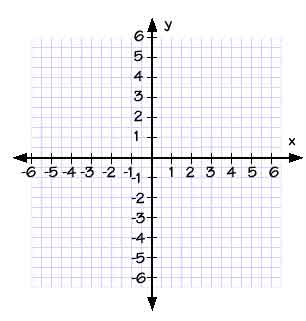Coordinate Geometry
Come and explore the Cartesian Plane
Formulas & Definitions
1.) Midpoint Formula
[((X1 + X2)/2),((Y1 + Y2)/2)]
-The Midpoint Formula is used to find the point that represents the middle of any given line segment. The Midpoint Theorem states that the x coordinate of the midpoint is the average of the x coordinates of the endpoints. The y coordinate acts the same as the x in that it is the average of the y coordinates. In order to find the midpoint, when the line segment has the endpoints of (x1, y1) and (x2, y2), then the formula is:
-For Example: Find the coordinates (x, y) of the midpoint of the segment that connects the points (3, -4) and (-8, 6).
-Solution:[((x1+x2)/2), ((y1+y2)/2)] = [((3+-4)/2), ((-8+6)/2)] = (-.5, -1)
2.) Equations of Lines
Y=mx+c
-Sometimes you are given only parts of the information about a graph and are expected to find the equation of the line described. This is when gradient-intercept form comes into play
-For Example: Write the equation of the line that passes through the point (2,-3) and has a slope of (1/2). Use slope intercept form.
Solution:Write the general equation used for slope intercept form.
Y=mx+c
Now plug in the given information.
-3=(1/2)2=c
-3=1+c
-4=c
Now all you have to do is write the equation of the line in gradient-intercept form:
y=.5x-4
3.) Distance Formula
D= sqrt[ (X2-X1)^2 + (Y2-Y1)^2]
-When you would like to find the distance between two points such as (x1, y1) and (x2, y2), then the distance formula is what you use.
-For Example: Find the distance between (-2, 3) and (8, -1).
-Solution:
D= sqrt[ (8-(-2)^2 + (-1-3)^2]
D= 2(sqrt(29))

Explanation of content material
Grasping the ideas of coordinate geometry
*Coordinate geometry has much to do with points on a graph. But how do you know how to place these points on a graph? This can be done by reading a coordinate table. From the graph constructed, one must know how to to determine the gradient of a line which is the level of incline or decline of a line. Many things can be determined from a slope, for instance, one could determine whether two lines are parallel, perpendicular, or even more importantly, solving a systems of equations.*
Coordinate Table
The coordinate table is the basic tool used for constructing a graph because it gives you a variety of points that form a line or shape. To read a coordinate table, you must read the x row on the table and locate the number in the table on the coordinate plane. Then below that x number you will find its corresponding y coordinate. These two numbers will form your (x, y) point on the plane. And example IB problem is as follows:
Problem: Create a Line using the two coordinates in the table below.
Solution: From this table we can tell that there are two different points that create a line which has a gradient of one and a y-intercept of 0.

Gradient of a line
Gradient of a line is the rate at which a line accends or decends. Slope of a line can be determined simply by using the equation:
m = (rise/run) = ((y2-y1)/(x2-x2))
In the case of the coordinate table above the slope can be found with this equation:
m = ((y2-y1)/(x2-x2))=((2-1)/(2-1))= 1
However this problem is a little to simplistic. A more common IB problem would be more like this:
Problem: If lines L1 and L2 are perpendicular to eachother what is the gradient of line L1 if its y-intercept is (0,7), and L2 contains the two points of (0,-2) and (5,0).
Solution: 2 very important rules one must know are that in the event of a perpendicular lines, their slopes are negative reciprocals of eachother(ex. m1 is perpendicular to (-1/m1) and in the case of parallel lines the slopes are equal(ex. m1 = m2). There for in this problem since we know the lines are perpendicular we only need to solve for the slope of line 2.
m2 = ((y2-y1)/(x2-x2))=((0+2)/(5-0))= (2/5)
Therefore--> m1 = -(5/2) because the perpendicular lines are negative reciprocals of eachother.

Systems of Equations
One of the most common IB Coordinate Geometry problems asked has to deal with finding the point of intersection of 2 lines. Examine the following IB problem to understand the step process of finding the crosspoint of two lines.
Problem:
Using the substitution method, solve for x and y in the following system where X-2Y =-7 and 2x+3y =0.

*Step 1: solve for a variable in either equation
X-2Y =-7--> X =2Y-7
*Step 2: substitute the equation found for X into the second part of the system.
2x+3y =0--> 2(2Y-7)+3Y=0
*Step 3: solve for Y.
2(2Y-7)+3Y=0--> Y = 2
*Step 4: using the equation X =2Y-7 from before, solve for X.
X =2Y-7-->X =2(2)-7--> X = -3
*Step 5: recognize the answer
Since X=-3 and Y=2; the point of intersection and solution to this problem is (-3, 2).

Coordinate Geometry Web Sites
Thank you for visiting my page at Angelfire.
Please come back and visit again!


![]()
